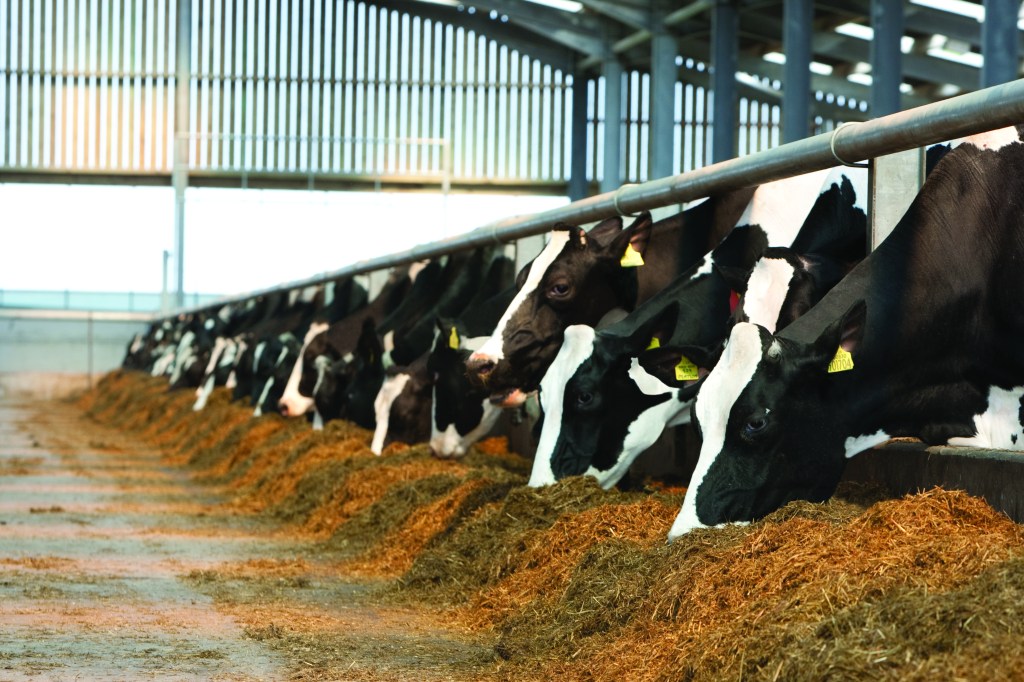What is grass silage?
Grass silage is a type of fermented forage which is made from preserved grass which undergoes a fermentation process at ensiling.
Farmers will work hard to create grass silage for their herds during the summer to ensure their animals have a delicious, balanced diet during the periods of the year when cows are housed.
When creating grass silage, farmers will cut the grass in their fields and compact it in a silage clamp. This way it is stored whilst the fermentation process takes place, until it is good enough for their cows to eat.
How is grass silage made?
There are multiple steps farmers have to take when creating grass silage to ensure it is fermented in the correct way.
Harvesting & chopping
To begin, the grass is harvested. This process usually begins at the start of May, when the weather is just right and grass is growing quickly.
Typically, this month provides the optimal time for grass cutting, however, poor and wet weather conditions can delay this.
At this time, the grass has lots of nutritional value and will offer a high yield.
Farm workers will cut this grass with a specialised, heavy agricultural mower. Other equipment such as tedders and rakes are then used to help the grass wilt quickly so a dry matter in the region of 30% is achieved.
The forage harvester will lift the grass from the field. Then it will chop the grass into small lengths, making it better for the compaction and fermentation processes. Ideally a silage additive will be applied to the grass as it travels through the forage harvester.
Compaction & covering
Grass that has now been harvested and chopped needs to be compacted to encourage the fermentation process.
This begins by piling all of the grass into a silage clamp. Typically, a tractor will be used to drive over thin layers of the chopped grass continuously. This is to ensure the grass is compacted as tightly as possible.
Compaction is a vital step to minimise the amount of oxygen in the silage to promote fermentation.
Once the grass has been compacted, it is important to cover it with a plastic sheet. This is made to both exclude oxygen and to create a seal.
This will also protect the silage from weather conditions such as rain, or intense heat.
The cover is usually weighted down using tyres or mats to prevent it blowing away in the wind. It also helps to maintain compaction in the upper layers of stored silage.
Fermentation
Now the silage has been compacted and covered, the fermentation process will take place.
At this stage, if the appropriate silage additive has been used healthy bacteria, primarily lactic acid producing bacteria, will begin converting the sugars in the grass into lactic acid. This process is called anaerobic fermentation.
The lactic acid will work to reduce the pH of the silage. That makes it stable for long term storage. Although it is more acidic than grass, lactic acid preserves the nutrients in the silage superbly while the silage itself remains very palatable for the cow to eat.
Once each of these steps are completed and the fermentation has finished, the silage will be stored until it’s required to be fed to the farmer’s livestock.
If you want to learn more about silage additives and how they can help improve the quality of silage, visit our website.






